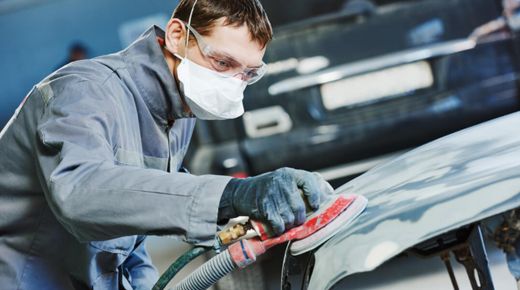Auto collisions are unfortunate events that can result in significant damage to vehicles. Understanding the intricacies of auto collision repair is essential for vehicle owners. This comprehensive guide will provide insights into the collision repair process, the types of damages that can occur, and how to choose the right automotive repair services.
What is Auto Collision Repair?
Auto collision repair refers to the process of restoring a vehicle to its pre-accident condition following a collision. This may involve a range of repairs, including bodywork, frame straightening, and mechanical adjustments. The goal of auto collision repair is not only to make the vehicle safe and functional but also to ensure that it looks aesthetically pleasing.
Common Types of Auto Collision Damage
Damage sustained during an auto collision can vary greatly, depending on the severity of the incident. Here are some common types of damage:
1. Body Damage
This type of damage is visible and includes dents, scratches, and broken panels. Body damage can compromise the vehicle’s structural integrity and appearance, making it essential to address promptly.
2. Frame Damage
Frame damage occurs when the main structure of the vehicle is bent or warped due to impact. This type of damage is often more severe and may require specialized equipment to assess and repair properly.
3. Mechanical Damage
Collisions can also cause mechanical damage, affecting the engine, transmission, and suspension systems. It is crucial to have these components thoroughly inspected to ensure the vehicle’s safety and performance.
4. Paint Damage
In many collisions, the vehicle’s paint can become scratched or chipped. Proper paint repair is essential not only for aesthetics but also to prevent rust and corrosion.
The Auto Collision Repair Process
Understanding the auto collision repair process can help vehicle owners feel more informed and confident when seeking repair services.
1. Initial Assessment
The first step in the repair process is a thorough assessment of the vehicle’s damage. This often involves an inspection by a certified technician who will document the extent of the damage and provide an estimate for repairs.
2. Insurance Notification
Once the damage assessment is complete, the next step is to notify the insurance company. Many repair shops can assist with this process, ensuring that the necessary paperwork is completed correctly.
3. Repairs
After approval from the insurance company, the repair work can begin. This may involve:
- Bodywork: Repairing or replacing damaged panels and parts.
- Frame Straightening: Utilizing specialized equipment to realign the vehicle’s frame.
- Mechanical Repairs: Fixing any mechanical components that were affected during the collision.
- Painting: Matching and repainting the vehicle to restore its original appearance.
4. Final Inspection
After repairs are completed, a final inspection is conducted to ensure all work meets safety standards and quality expectations. This step is crucial for verifying that the vehicle is roadworthy.
5. Vehicle Return
Once the vehicle passes the final inspection, it is returned to the owner. Many automotive repair services offer a warranty on their work, providing peace of mind for vehicle owners.
Choosing the Right Automotive Repair Services
Selecting the right automotive repair services is critical to ensuring quality repairs. Here are some factors to consider:
1. Reputation and Reviews
Research potential repair shops by checking online reviews and asking for recommendations from friends and family. A shop with a strong reputation is more likely to provide high-quality service.
2. Certifications and Affiliations
Look for repair shops that are certified by reputable organizations, such as the National Institute for Automotive Service Excellence (ASE). Certifications indicate that the technicians have undergone rigorous training and adhere to industry standards.
3. Transparency and Estimates
A reputable auto collision repair shop should provide clear estimates and be transparent about the repair process. They should also communicate any changes in cost or timelines promptly.
4. Warranty on Repairs
Inquire about warranties offered on repairs. A warranty demonstrates the shop’s confidence in their work and provides an added layer of protection for vehicle owners.
5. Location and Convenience
Consider the location of the repair shop and whether they offer services such as towing or rental vehicles. Convenience can significantly reduce the stress associated with auto collision repair.
Conclusion
Auto collision repair is a complex process that requires specialized knowledge and skills. By understanding the types of damage, the repair process, and how to choose the right automotive repair services, vehicle owners can navigate this challenging experience with confidence. Whether dealing with minor bodywork or extensive mechanical repairs, taking the time to select a qualified repair shop is essential for ensuring the safety and longevity of your vehicle.

